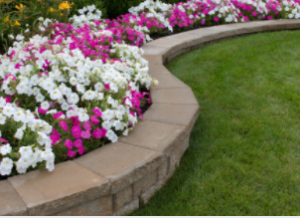A retaining wall is an effective method of landscaping your yard. Retaining walls can add valuable curb appeal to any yard, thus increasing home property value and boosting homeowners’ equity more frequently than not. However, a retaining wall can be a costly addition to your yard. If you’re planning to build a retaining wall around your home, you can choose from several different materials.
 There are several reasons why homeowners opt for a stone or brick #1 Retaining Walls Adelaide. Stone materials tend to be the more natural choice, giving a retaining wall a “homey” appearance. And for added visual appeal, the use of coloured stones, such as brick or sandstone, goes a long way in making a yard more attractive. Of course, stone materials aren’t the only options out there. For those looking for a more decorative option, concrete retaining walls are available. Concrete structures also have the advantage of not retaining moisture, which is essential in the summertime when water levels tend to be highest.
There are several reasons why homeowners opt for a stone or brick #1 Retaining Walls Adelaide. Stone materials tend to be the more natural choice, giving a retaining wall a “homey” appearance. And for added visual appeal, the use of coloured stones, such as brick or sandstone, goes a long way in making a yard more attractive. Of course, stone materials aren’t the only options out there. For those looking for a more decorative option, concrete retaining walls are available. Concrete structures also have the advantage of not retaining moisture, which is essential in the summertime when water levels tend to be highest.
When constructing a retaining wall that will protect your house and yard against snow and ice, one primary concern has to do with the area’s proper drainage. A retaining wall is designed to keep water away from the house’s foundation, where it usually collects during the winter. Common sense says you want an adequately drained space. And while some may think that grading the yard or excavating the foundation would solve the problem, both methods can create problems with the drainage of the area.
Depending upon your locale, your land’s slope may not provide the proper drainage necessary to prevent water from collecting. Excavation can cause unnecessary damage to the soil, as well. Not to mention, it’s simply not a cost-effective solution. As such, landscaping a natural stone retaining wall provides a cost-effective solution that will optimize the function of the retaining wall and eliminate any possible problems associated with landscaping the lawn or landscape.
Landscaping around the #1 Retaining Walls Adelaide can be the easiest way to maintain a healthy landscape surrounding the structure. Most homeowner’s landscaping projects fail because they fail to account for the effects of weather and climate play on retaining walls. And a retaining wall is designed to retain certain things: water, salts, and liquids. Any change in these elements can compromise the retaining wall’s ability to hold back the excess liquid.
The easiest way to ensure that retaining walls will remain intact and functional is to use a landscaping plan that considers three critical factors: the slope of your land, the amount of sunlight reaching the base of the structure, and the amount of drainage. Since natural stone is a naturally occurring material, you can make a beautiful outdoor design that enhances the look of your landscape and increases the value of your home. A straightforward way to incorporate the concept of gravity wall with an existing concrete wall is to create a walkway with planters and flowers. This will add dimension and interest to the existing concrete walls without the need to dig out and replace the structure.
Landscaping around retaining walls can also include the integration of erosion control strategies. Erosion occurs when soil takes a path through the material built upon, creating an imprint that is visible to the human eye. When this happens, the soil travels up the hillside and over the top of the retaining wall. As this process occurs, the landscape gradually slopes away from the retaining wall. While the process is aesthetically pleasing, this type of erosion is most detrimental to the retaining wall’s long-term health and the surrounding area.
This process is most commonly seen when building a retaining wall that is located at a higher elevation. For a retaining wall located at a lower elevation, the use of a combination of the above two processes should be used. One way to do this is to build portions of the retaining wall directly on top of the soil. Sand should then be added to the bottom, and then the top of the retaining wall is excavated and poured with gravel to seal the dirt surface underneath wholly.